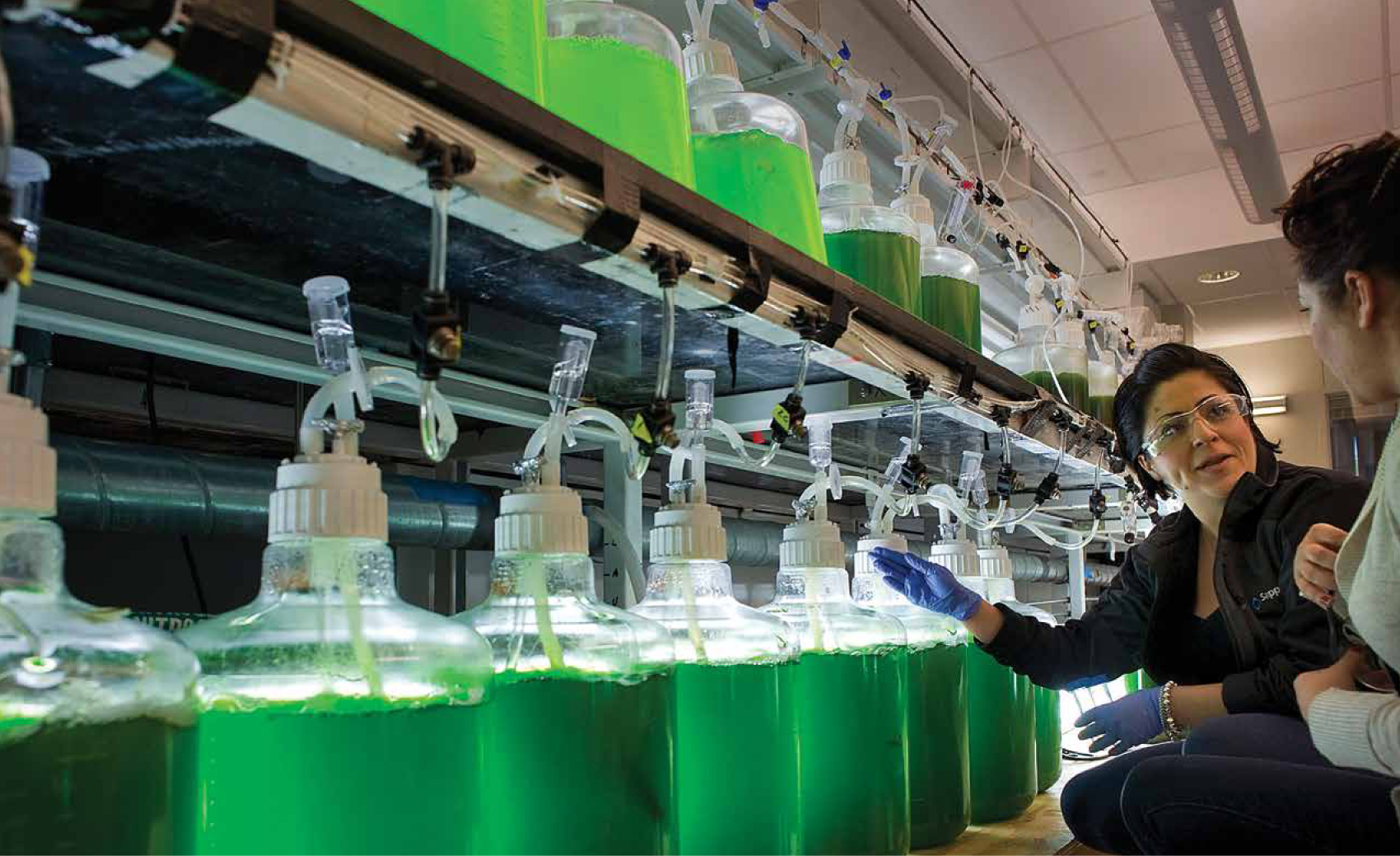25.6 There is another rising biofuel star: algae.
In January of 2009, Continental Airlines ran a test flight of a Boeing 737 powered by a blend of normal fuel and a new type of biofuel manufactured from algae.
Like Tillman, algae researcher Stephen Mayfield didn’t set out to discover a new type of biofuel. But after spending decades studying and tweaking the genetics of algae, he and his colleagues at the University of California, San Diego, had an epiphany in 2006. At that time, Mayfield was watching TV footage of the glaciers shrinking from climate change, and paying more for gas every time he fuelled up. During a meeting to discuss an ongoing research project to engineer algae to produce drugs such as antibiotics, a new idea arose. “We realized, ‘wait a minute, if we can do that, we can produce fuel.’”
464

Like tiny factories, algae use photosynthesis to convert CO2 and sunlight into sugars and then convert some of the sugars into oil, which can be harvested and converted to biodiesel. Algae are now making the same kind of headlines as LIHD biofuels, and for good reason.
Algae have some clear advantages over other biofuel sources. Like switchgrass, algae won’t compete with food. They grow very quickly and can be raised on salty water, so they don’t use up freshwater. Algae are also predicted to generate 30 times more oil per hectare than other plants used for biodiesel, such as soybean, oil palms, and rapeseed.
But algae can be finicky—it is difficult to maintain the ideal conditions to maximize oil production—and the facilities are expensive. Plus, unlike corn and other land crops, people haven’t been harvesting algae on a large scale for generations, so scientists have to devise new infrastructure. Even so, algae-based biofuels are starting to look like big business. There are hundreds of U.S. companies now invested in turning algae oil into fuel, according to the U.S.’s National Renewable Energy Laboratory. One company Mayfield cofounded, Sapphire Energy, recently opened the commercial test phase of its “green crude” algae farm −120 hectares of algae ponds in a New Mexico facility. While there are over 35 algal biofuel conpanies in the United States, Canada only has 3 to date.
Those investments may one day pay off. After Continental Airlines analyzed data from the test flight, they found that the algae biofuel blend resulted in a 1.1% increase in fuel efficiency over regular jet fuel and didn’t affect the jet’s ability to perform flight manoeuvres such as a mid-flight engine shutdown and restart. [infographic 25.5]

465